VS1 Diamond: A Buyers Guide
What is the best clarity? Flawless, Internally Flawless, VVS1? None of the above. VS1 is actually the best. Why? Let me convince you in this VS1 buying guide.
What is VS1?
The VS part of the clarity grade stands for very slightly included and consists of two subcategories of VS1 and VS2. Diamonds that fall within this broader category of VS have minor inclusions that are difficult to somewhat easy for a trained grader to see when viewed under 10x magnification. VS1 represents the diamonds that have inclusions that are difficult for a trained grader to see. They are definitely quite a bit cleaner in appearance than their VS2 counterparts.
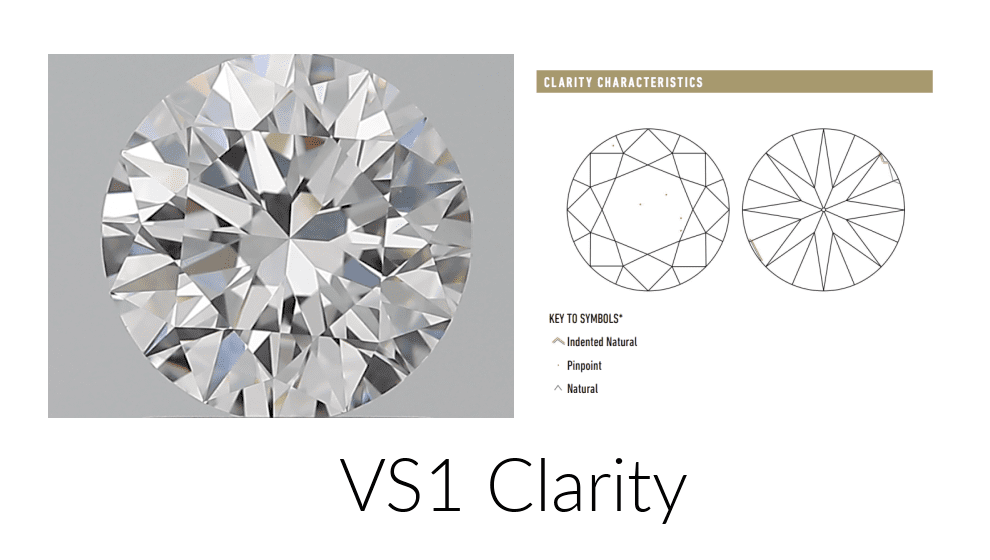
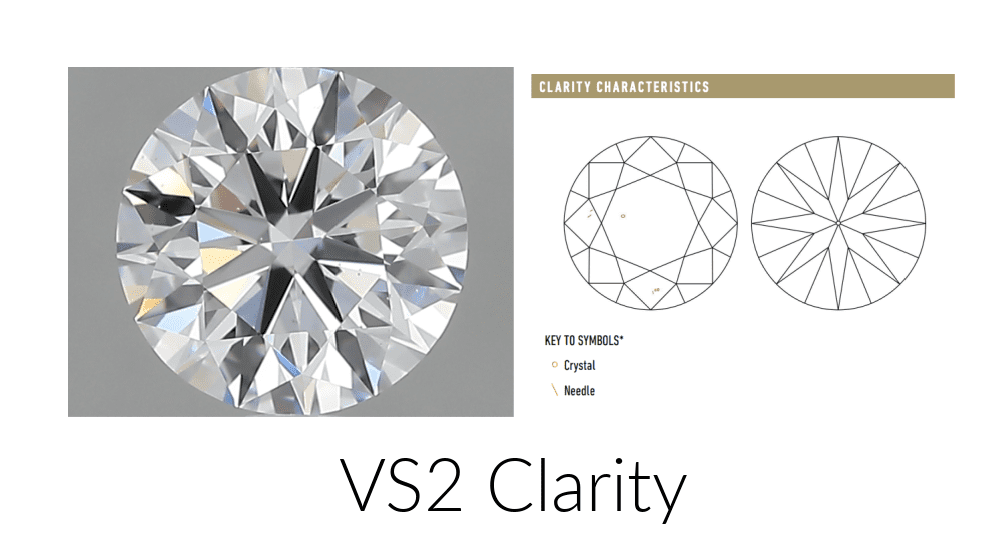
Where does it fall on the clarity scale?
VS is really in the middle of all the clarity categories. There are a total of 10 clarity grades from GIA. VS1 is the 5th, and VS2 is the 6th clarity grade. VS1 represents the middle of all clarity grades.
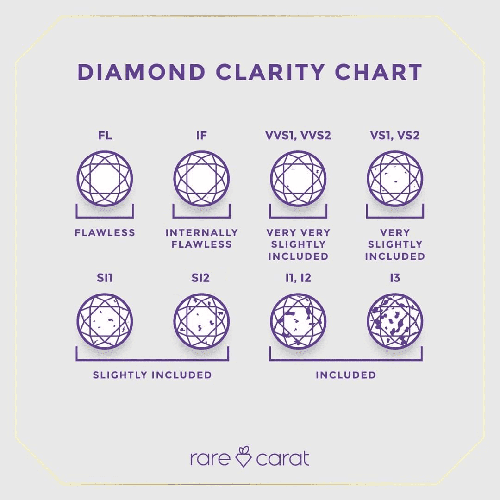
Why is it so important?
Not only does VS represent the middle of all diamond clarity, but it is also regarded as a general threshold for eye-clean stones. This means that for all stones with VS2 or better clarity, the diamond will appear flawless and indistinguishable to the naked eye. At the same time, VS2 is generally considered to be the benchmark of eye-clean diamonds. VS1 is the guarantee for an eye-clean and eye-perfect stone.
The Role of Crystals:
One unspoken rule for diamond clarity is the role of crystals. For GIA, a pinpoint and a crystal are really separated by whether the inclusion has a discernable body or essentially a point. So, what does it have to do with our VS1 stones? A crystal in 99% of the cases will demote the clarity of a diamond from a VVS to VS. This means VS1 will include very clean stones that unfortunately have a slightly too large pinpoint to call the stone a VVS2 stone. Keep a special lookout for VS1 with crystal as the first clarity characteristic listed for a great stone.
A picture is worth a thousand bucks
Any diamond that is 1 carat or larger and GIA graded will come with a plot or map for all the internal and external features. But should you rely on the plot alone to decide on purchasing the stone? No. VS1 can vary greatly in their face-up appearance all while still costing you around the same amount of money. Thus it is crucial to see the inclusions in real life and check if they are low relief (jargon meaning if the inclusions stand out little from the background). If it is low relief, you have found a great stone. If it is conspicuous, maybe you could get a better stone for that money.
What to avoid when choosing a VS1 stone?
There are generally two types of inclusions to look out for: Internal inclusions that are less desired and inclusions that can pose a durability issue.
One thing to keep an eye out for is opaque black crystals (also called Piqué). They are often roundish and appear very solid. In VS1 stones, they appear towards the edge of the girdle in very inconspicuous places. If you could avoid them, great!
A common durability concern comes from knots and cavities. Knots are crystals that are exposed on the surface. If you are unlucky, that little crystal might decide to move out. That leaves you with an ugly hole and a lighter stone. Very sad. A cavity is what happens when the knot pops out. It's a hole in the stone that can fill with super hard to clean dirt and oil or even chip/break the stone if hit just right.
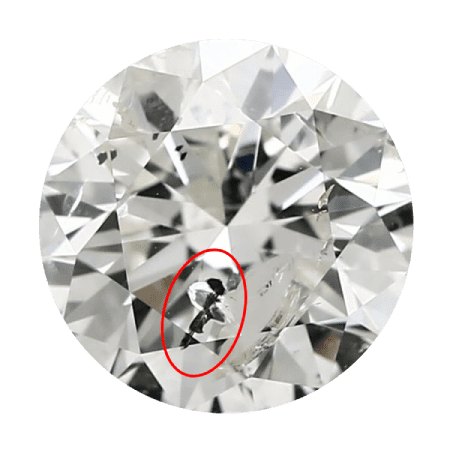
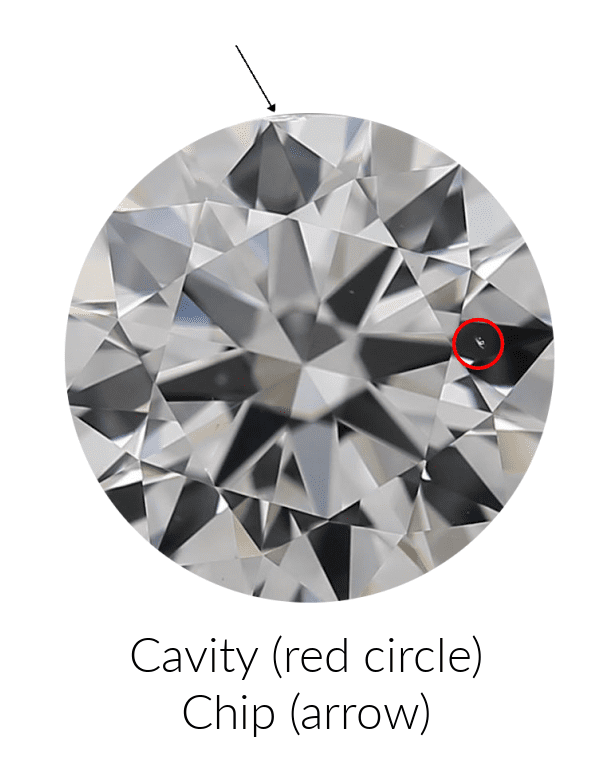
Another more elusive issue is inclusions near the cutlet or the bottom tip of the diamond. This occurs if a crystal or any other inclusion is located towards the bottom. The many pavilion facets will reflect the one small inclusion many times all around the stone. Those are the easiest to find in a video.
Understanding the Value of a VS1 Diamond:
When diving deep into the world of diamonds, you'll encounter a myriad of terms, scales, and ratings. Among them, the term 'VS1' stands out not just as a mere classification but as a hallmark of quality and value. But why is this so?
Benefits of Choosing a VS1 Diamond:
1. Balance of Quality and Cost: When considering diamonds with higher clarity, such as VVS1 or VVS2, you'll often pay a premium. VS1 diamonds offer nearly the same aesthetic appeal without the hefty price tag. Essentially, you get the best of both worlds: a virtually flawless appearance at a more reasonable cost.
2. Versatility: VS1 diamonds are versatile. Whether you're looking for a centerpiece for an engagement ring, earrings, or even a pendant, a VS1 clarity diamond ensures brilliance and sparkle without visible imperfections.
3. Resale Value: The resale market often looks favorably upon VS1 diamonds due to their optimal balance of clarity and value. Their desirability means they tend to hold their value better than some other grades.
VS1 Diamond in Comparison with Others:
Comparing VS1 with other clarity grades can further highlight its uniqueness:
Flawless (FL) and Internally Flawless (IF): These are the pinnacle of clarity, but come with a significant price increase. The difference in inclusions between these grades and VS1 is often indistinguishable to the unaided eye.
VVS1 and VVS2: Inclusions in these diamonds are still minuscule and hard to detect, even for experts. However, the price point is generally higher than VS1, making VS1 a more cost-effective choice for those seeking high clarity without the top-tier cost.
VS2: While still a commendable grade, VS2 diamonds might occasionally have more noticeable inclusions than those in VS1 diamonds, especially upon close inspection.
Factors to Consider with VS1 Diamonds:
While VS1 diamonds offer an excellent blend of clarity and value, potential buyers should consider a few factors:
- Cut and Shape: The diamond's cut can influence how inclusions appear. Brilliant cuts, such as round or oval, can help mask inclusions better than step cuts like emerald or asscher.
- Setting: The choice of setting can also hide or accentuate inclusions. Bezel settings or halo designs can often conceal minor imperfections near the diamond's edge.
Is VS2 or VS1 Better for Diamonds?
The answer depends on individual preferences and budget:
For a near-flawless appearance without the top-tier price: VS1 offers a cleaner look, making it a popular choice for those who prioritize clarity.
For value and budget-friendly options: VS2 diamonds often provide a more cost-effective choice, delivering an eye-clean appearance in most cases without the premium price of higher clarity grades.
In conclusion, while VS1 is technically superior in terms of clarity, VS2 diamonds can offer better value for money. Always view the diamond in person or use high-resolution imagery to assess its appearance, and consider factors like size, cut, and setting, which can influence the visibility of inclusions.
Is VS1 or VVS1 Better for Diamonds?
For prestige and near-perfection: VVS1 diamonds are closer to being flawless, making them an ideal choice for those seeking superior clarity without venturing into the more expensive Flawless and Internally Flawless categories.
For a balance of clarity and value: VS1 diamonds provide a visually stunning appearance in most cases, often without the premium price associated with the higher clarity grades like VVS1.
In summary, while VVS1 boasts a technically higher clarity grade, VS1 diamonds can deliver an excellent balance of beauty and value. When choosing between the two, consider factors such as budget, the diamond's size (as inclusions can be more noticeable in larger diamonds), and personal preferences regarding clarity.
Now decide on the rest of the 4Cs:
- Read here to learn more about 4C: Color
- Read here to learn more about 4C: Clarity
- Read here to learn more about 4C: Cut
- Read here to learn more about 4C: Carat

